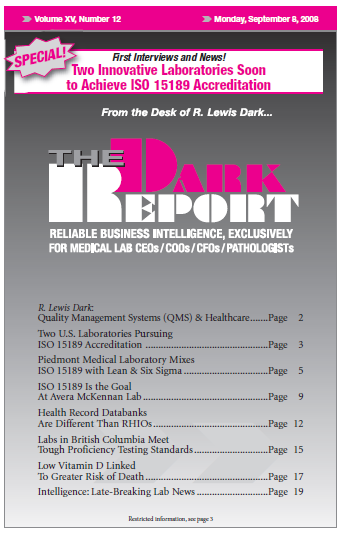CEO SUMMARY: Piedmont Medical Laboratory (PML) could be the only clinical laboratory ever to pursue three quality improvement initiatives simultaneously. Even as it was in the early stages of implementing both Lean and Six Sigma methods, PML also decided to seek ISO 15189:2007 accreditation. Since 2004, the lab has worked diligently to put all three …
Piedmont Med Lab Mixes ISO with Lean & Six Sigma Read More »
To access this post, you must purchase The Dark Report.


